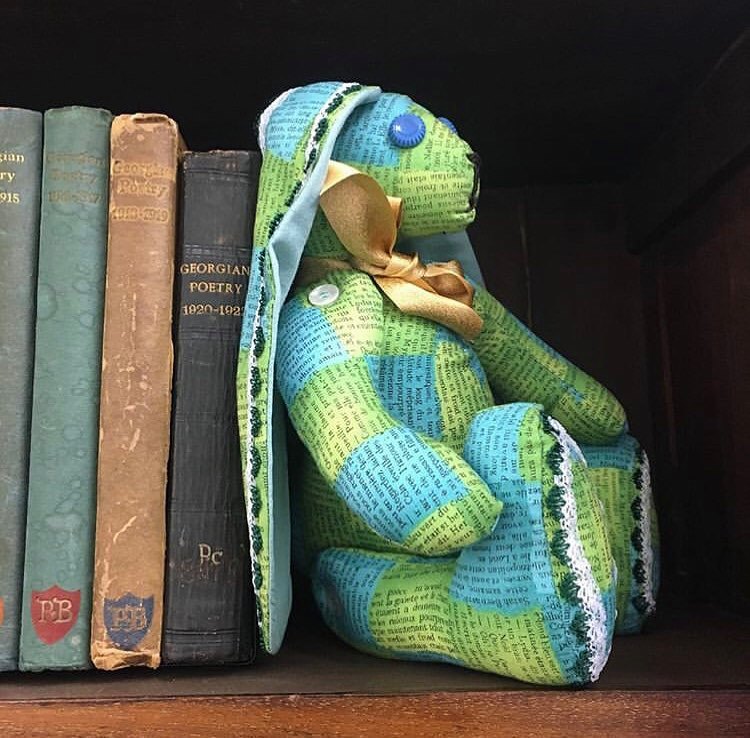
With new course Beginning Cataloguing Rare Books launching on Monday, I thought it would be useful to highlight some free resources for cataloguing rare books.
1. Descriptive Cataloging of Rare Materials (Books) (DCRM(B)). The main standard for rare books cataloguing is maintained by the Rare Books and Materials Section (RBMS) of the Association of College & Research Libraries and is available to download in pdf form for free.
2. The English Short Title Catalogue (ESTC). A firm favourite with Beginning Bibliography students and anyone else who researches Early Modern and Eighteenth Century books, the ESTC is available free on the British Library website. Originally the Eighteenth Century Short Title Catalogue (begun in 1980), its coverage was extended from 1987 to include books from the beginning of printing in the British Isles (ca. 1472) to 1700. It draws on the work of earlier scholars, incorporating both Pollard and Redgrave and Wing, as well as holdings reported by over 2,000 contributing libraries. There’s an overview of its coverage here.
3. The Incunabula Short Title Catalogue (ISTC). A sister catalogue to the ESTC, as its title suggests the ISTC covers books printed before 1501. Again coordinated by the British Library, contributing libraries cover every corner of the globe, and by August 2016 its website could claim that “The database records nearly every item printed from movable type before 1501, but not material printed entirely from woodblocks or engraved plates.” An extremely useful piece of scholarship, and an indispensable resource for any cataloguer trying to trace a recorded copy of an incunable they are trying to catalogue.
4. Material Evidence in Incunabula (MEI). Based on bibliographic records from the ISTC, MEI provides post-production evidence, and so is a wonderful resource for provenance information. Again, contributions have been obtained from a range of international libraries with strong holdings of incunables. Free to search on the CERL website.
5. Heritage of the Printed Book Database (HPB). Another CERL initiative, HPB began life as the Hand Press Book Database and then expanded to cover the period c.1455-c.1830. It is a consolidated catalogue derived from a wide range of contributors, with a list that in itself can be useful if you want to look at holdings of a specific library. The usual caveats for any consolidation apply, but generally its search mechanism works well and it is certainly useful in limiting the dataset to only the handpress period.
6. Jisc Library Hub Discover. For many years, COPAC was the byword in consolidated catalogues in the UK. Rebranded to form part of a suite of offerings from Jisc, Discover brings together catalogue data from research libraries, and is a brilliant way to see if anyone else holds a copy of the item you are cataloguing. Given the large number of libraries who contribute, it is a useful indicator of the rarity of an item. Its Advanced Search options include year published, which is obviously essential if you are looking for a title that is likely to have been republished and reprinted many times over the centuries.
7. RBMS Latin Place Names File. Drawing on Peddie’s Place Names in Imprints and Graesse’s Orbis Latinus, as well as several online sources, this useful resource helps cataloguers work out where in the world a Latin name means in modern English. It’s a browsable alphabetical listing, so it is easy to see similar place names.
8. VD-16 and VD-17. Two separate resources covering German holdings from the 16th and 17th centuries. Simple to search even if you don’t have much German, and useful tools.
9. Artists and the Book. Not all rare books are old. I love artists’ books, and the National Art Library has a nice way of presenting its holdings – first through a collections highlights page, from which if you select “Search the Collections” it will take you to a saved search on the V&A Collections database, which you can then explore. In teaching cataloguing artists’ books and other materials (such as exhibition catalogues), I often compare the National Art Library approach with the Tate’s, since both institutions follow international standards but have chosen slightly different options within them.
10. Lists of resources. Several organizations maintain lists of resources for rare books cataloguers, including RBMS’s Web Resources for the Rare Books Cataloger; CERL Resources; and the Historic Library Forum’s Useful Links page (HLF also has a range of publications that are useful, including Cataloguing Hebrew, Cataloguing Latin and Cataloguing Incunables).